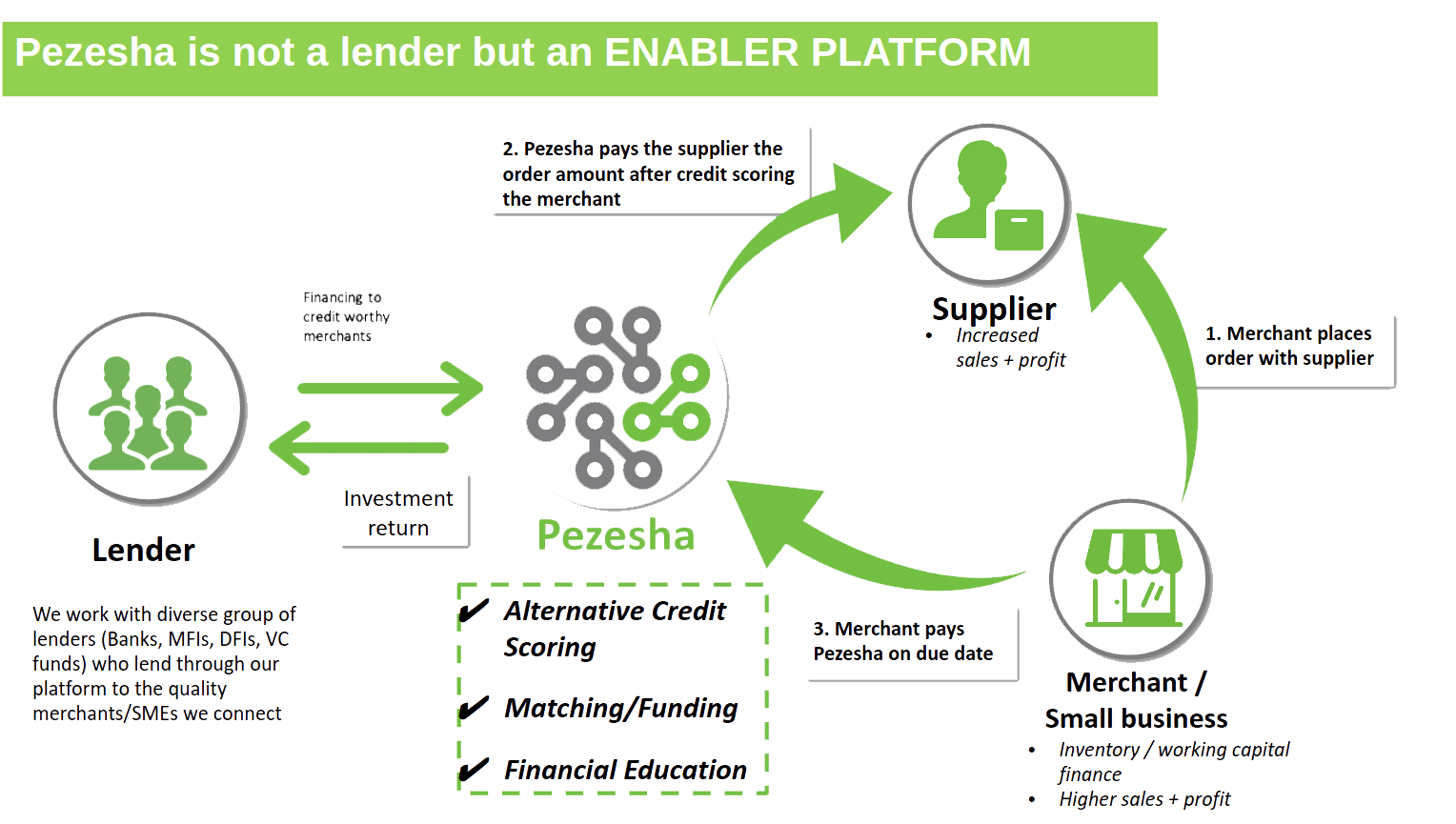Pezesha conducts an institutional-quality diligence process and this exhaustive end-to-end process spans traditional financial and operational analysis. This process results in collecting key business information and spending time virtually or on-site with businesses to understand their operations, thereby selecting high-quality MSMEs with high potential repayment rates.

1. Pre-approval
Pezesha conducts a two stage process to filter out a borrower’s for threshold issues.
Stage 1
- Borrowers begin their journey via on 2-minutes online form application.
- Borrowers answer a few questions pertaining to their operating history, loan request amount, CRB details and geographic location
- Acceptance or Rejection is based on KYC issues and mobile money data.
Stage 2
- If Borrowers meet stage 1 initial screening thresholds, they move to Stage 2 where they speak to members of the Pezesha credit office to add context to the answers previously provided.
- Borrowers are finally taken to the Head of Credit Risk, where final decision on whether to enter full due diligence is made.
2. Business Diligence
Pezesha collects key business information and spends time virtually or on-site with the lender to understand its business Our credit office team runs a comprehensive process answering over 50 questions across 5 functional areas.
a. Cashflow
Pezesha collects key business information and spends time virtually or on-site with the lender to understand its business Our credit office team runs a comprehensive process answering over 50 questions across 5 functional areas.
b. Conditions
We establish the prevailing market condition both general (macro and industry) and idiosyncratic conditions to set a level-playing field to anticipate the downside of extending credit to the borrower.
c. Collateral
For loans above 150K KES, we establish collateral in three ways.
- Fixed and Floating Debentures on business assets.
- Personal guarantees
- Charges on company shares.
d. Capital
We establish the weight of interest-bearing debt to the equity amount in the firm using ideologies around ratios such as Debt to Equity ratio and weight of interest-bearing current liabilities to current assets.
e. Character
Finally, we establish the character of the borrower by searching for past and present litigations, credit rating using our proprietary PATASCORE as well as social media profiles.
 ©2025
©2025